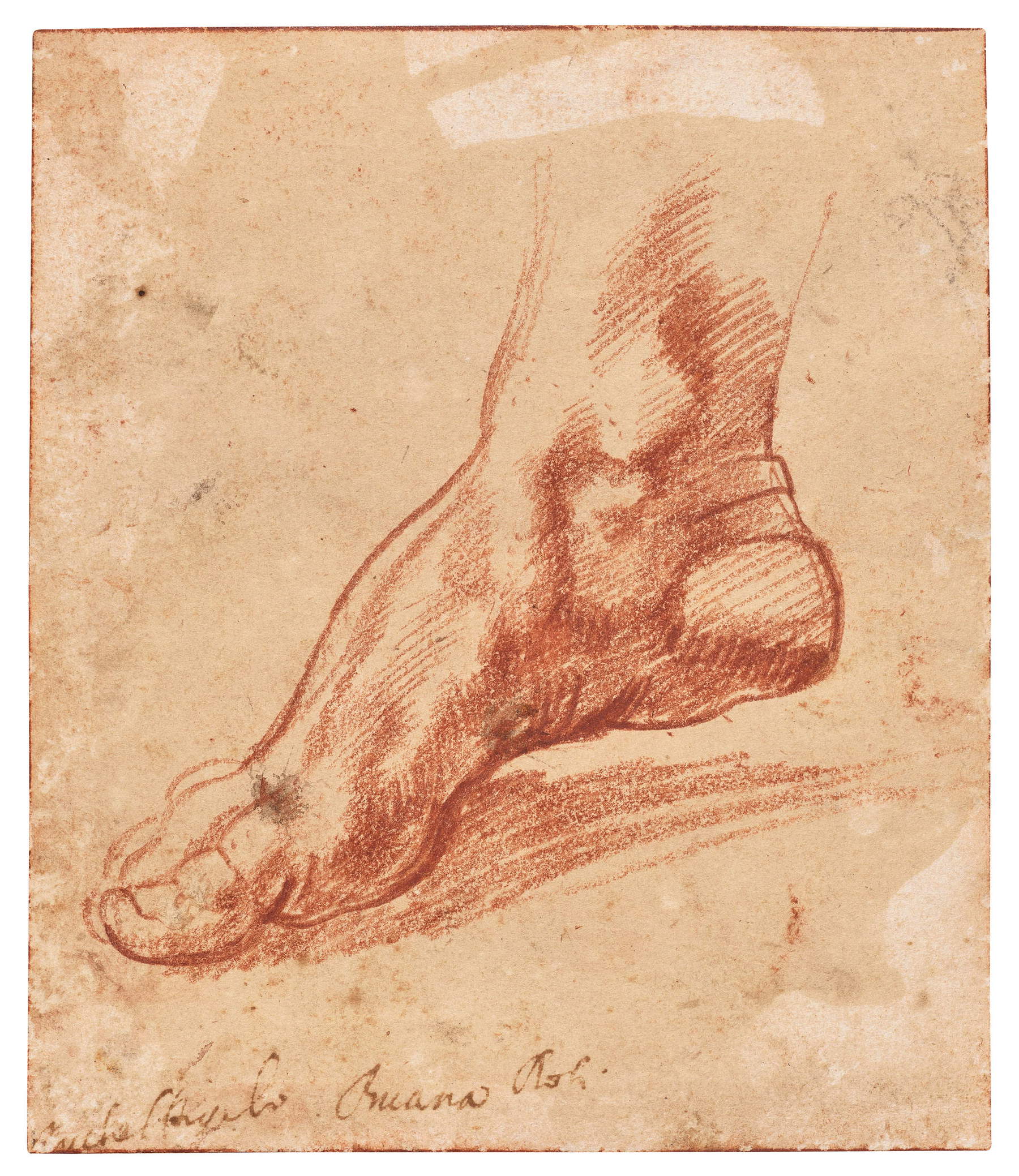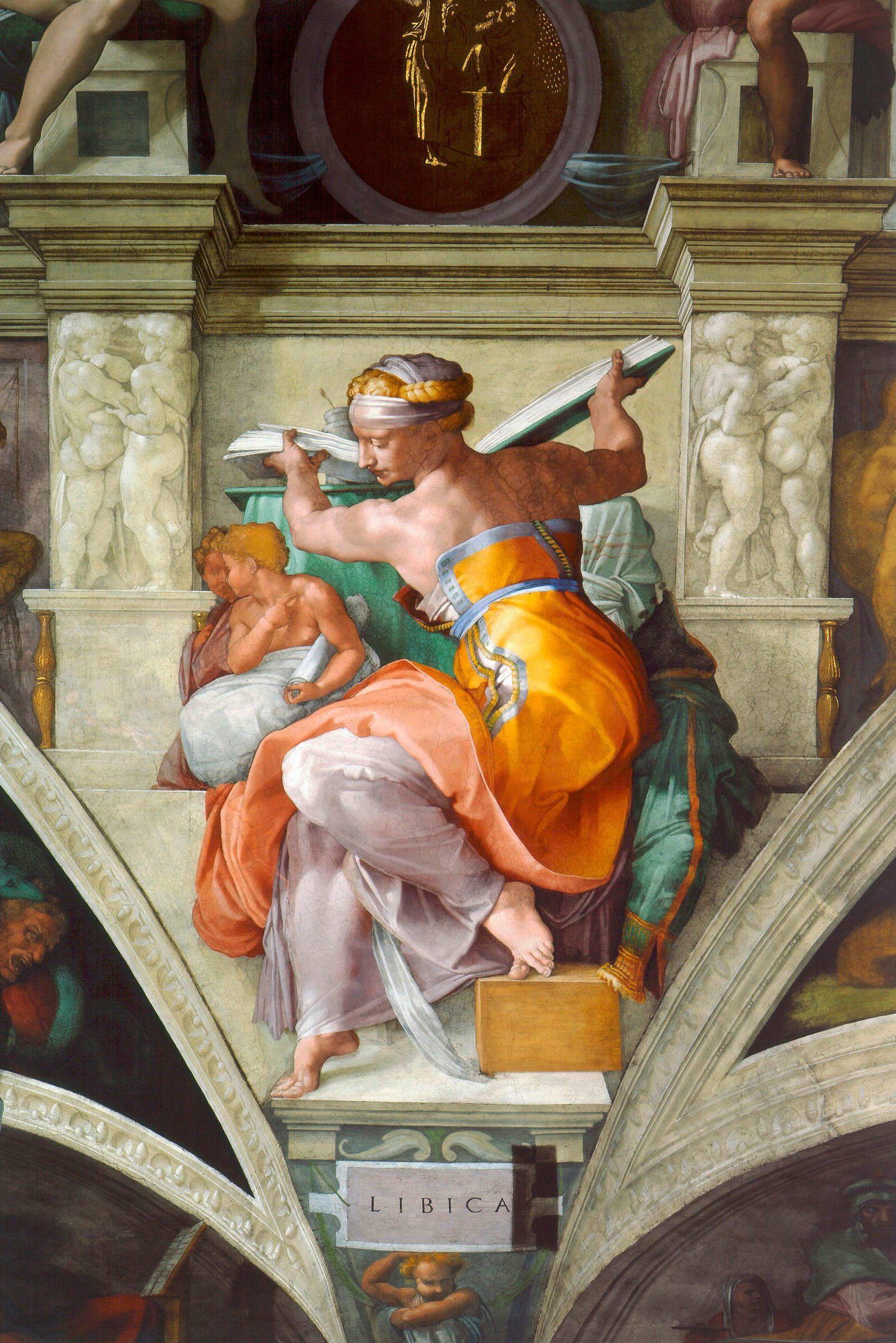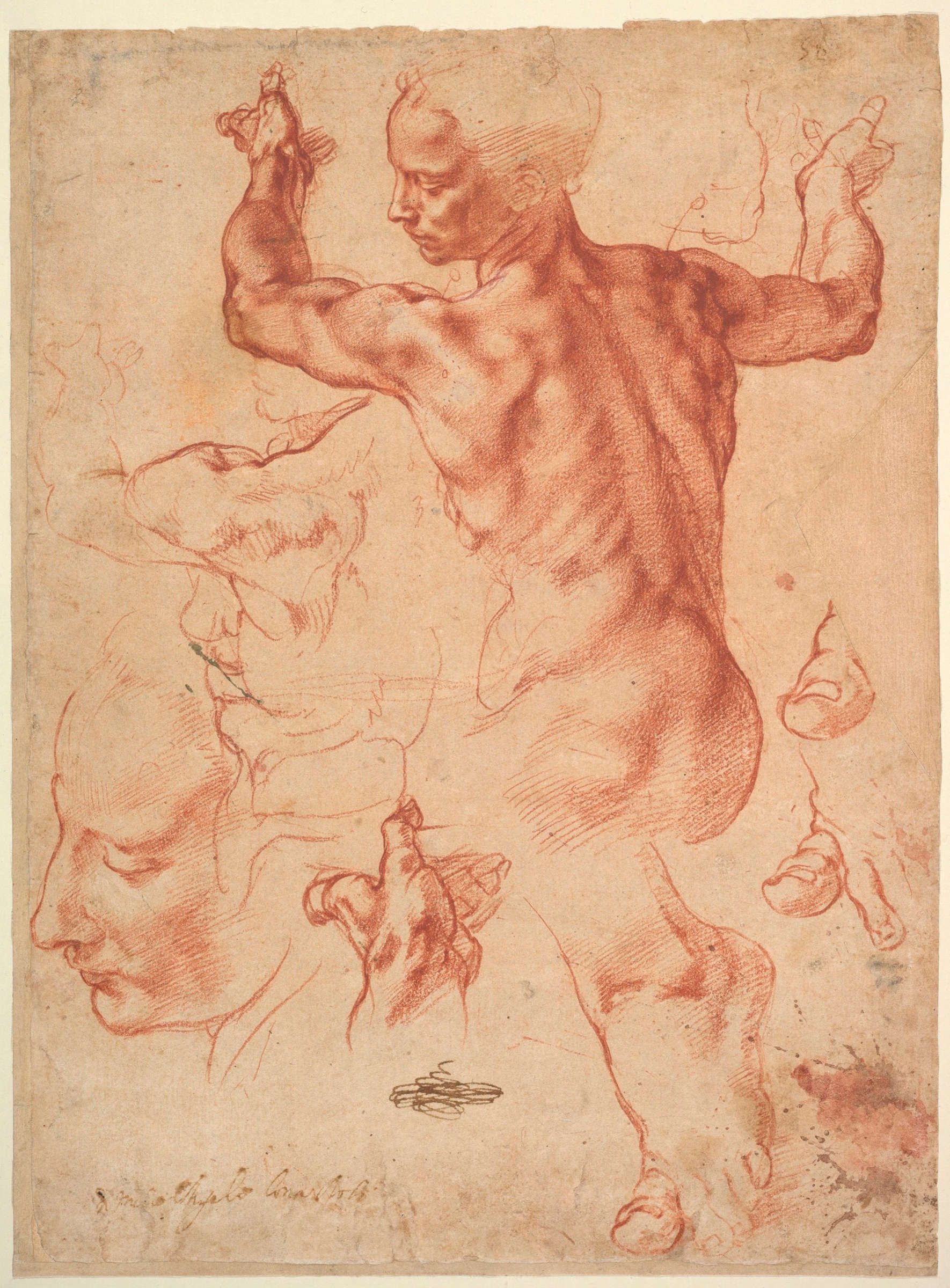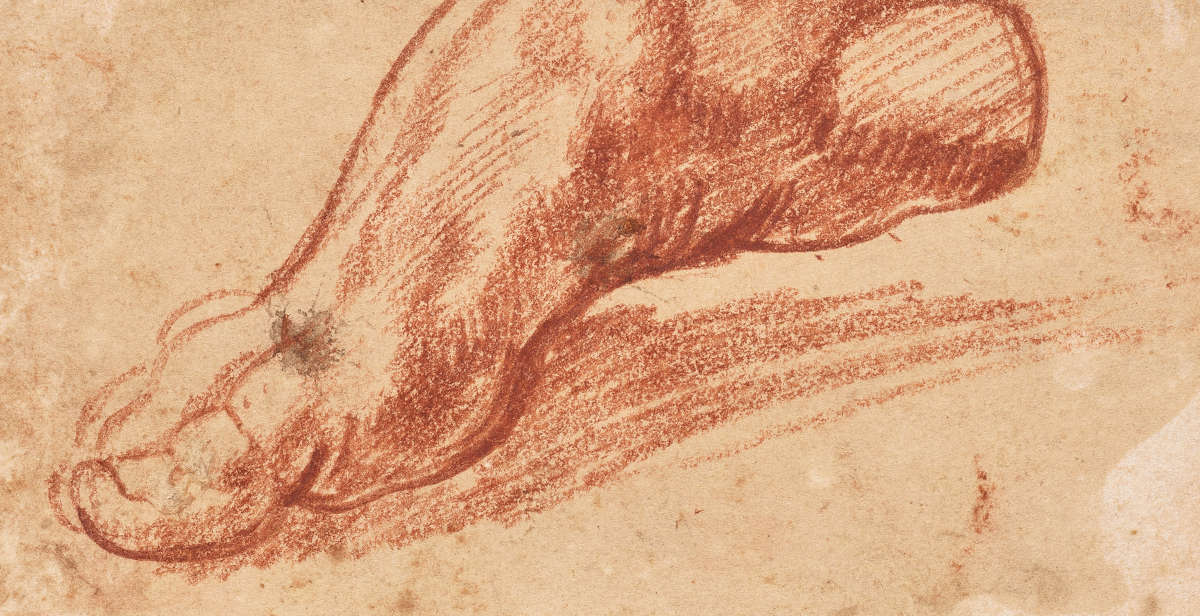A drawing by Michelangelo (Caprese, 1475 - Rome, 1564) for the Sistine Chapel vault emerges on the market: it is a rare and recently discovered sheet, and is one of the few drawings by the Tuscan artist still in private hands. It is, moreover, the only one related to the Sistine Chapel vault to have ever been auctioned. It is the study for a foot of the Libyan Sibyl and will go up for auction at Christie’s in New York on Feb. 5, 2026, with an estimate of $1.5-2 million (€1.3-1.75 million), thus rather far from the artist’s world record, €23 million, marked in 2022 in Paris.
Throughout his life, Michelangelo drew constantly, and it was through drawing that he planned and prepared his projects, developed his inventions, and perfected his ideas: unfortunately, however, the surviving sheets of his hand, about six hundred, amount to only a fraction of the thousands of drawings he must have produced. Very rarely have new drawings been rediscovered and added to Michelangelo’s graphic corpus over the decades. Almost all of Michelangelo’s known studies, excluding architectural drawings and sketches of marble blocks that Michelangelo sent to his quarrymen (one such block sketch went to auction last year, with an estimate of $6-8,000, and later sold for more than $200,000), are now in public collections. Only about ten sheets, including this newly discovered drawing, are in private hands.

Soon after receiving the commission for the Sistine vault (1508-1512), Michelangelo began work on studies for the frescoes. Over the next months and years, he continued to make studies, proceeding in pieces as he gradually painted the ceiling, completing one span of the vault after another. Through preparatory drawings, Michelangelo studied each of the figures, meticulously planning every detail of their poses and anatomy. The artist worked for four years on the Sistine Chapel’s vault, and during this period he must have produced hundreds of drawings, most of which are now lost.
In the first studies he made for the Sistine Chapel, Michelangelo mainly used pen, ink and black chalk. Over time, however, Michelangelo began to use red chalk more frequently, especially for studies of the human figure, which he drew from live models. Sanguigna, red chalk, was considered a more challenging technique than charcoal, as it is a harder stone and more difficult to erase from paper. However, some of its qualities, such as its color range and sharpness, made it particularly suitable for drawing the human body.
Hitherto unknown, the sheet belongs to an important group of sanguine figure studies that Michelangelo made on live models in preparation for the frescoes on the vault of the Sistine Chapel in the Vatican. These drawings are widely considered Michelangelo’s best results with this technique.
The foot study, as anticipated, is a preparatory drawing for the Libyan Sibyl, one of the most important figures in the vault, painted in the last bay on the east side of the chapel. The power and precision of the drawing, centered on the visual effect of the Sibyl’s toes pressing against the ground, demonstrate Michelangelo’s constant commitment to the accurate representation of the human body. The gigantic figure of the Sibyl, frescoed at a scale about three times the natural one, is portrayed in a complex pose: steady in her movement as she descends from her throne and holds an enormous open prophetic book, with the tips of her toes supporting its full weight.
Another drawing for the Libyan Sibyl is preserved at the Metropolitan Museum of Art in New York. This drawing sheet contains several studies: the largest image is a figure of a seated nude young man, seen from behind with his head in profile, arms bent and upper body rotated in an elegant contraposto, showing off the formidable musculature of his back. The young man’s study, carefully observed by a living model-most likely a young assistant posing in the studio-was transformed into the Sibyl in the fresco. In the painting, the Sibyl is fully clothed except for her powerful shoulders, arms, and bare feet. On the Metropolitan sheet, next to the young man’s body, are studies of other details Michelangelo filled the sheet with: another sketch of the torso, the head in profile, the right foot and various iterations of the fingers, and the left hand.

Michelangelo knew that the Sibyl would be painted clothed, but barefoot. This may explain his insistence on exploring the poses of her feet: the left foot on the Metropolitan sheet and the right foot on the newly discovered drawing. The new drawing, moreover, shows Michelangelo’s continued commitment to accurate depiction of the human body. The artist drew the foot with powerful energy, studying the visual effects of the toes pressing into the ground and supporting the entire weight of this monumental figure.
Looking closely at the contours of the back of the heel, we see how Michelangelo first traced the shape with a delicate chalk line and then reinforced it with a more vigorous stroke. This is characteristic of his exploratory working method. This kind of pentimento suggests that Michelangelo was adjusting the pose of the foot as he drew; he was thinking on paper about how best to render the tension of the raised foot on the toes.

“When confronted with this drawing,” says Giada Damen, a specialist in Christie’s Department of Old Master Drawings, “we can grasp the full power of Michelangelo’s creative force; we can almost feel the physical energy with which he rendered the shape of the foot, vigorously pressing the sanguine onto the paper. The drawing was then transferred to the fresh plaster of the ceiling, with the final position of the foot slightly altered so that the weight of the Sibyl was almost entirely supported by the toes. This shows how tirelessly Michelangelo was driven to perfect his work, even in the final stages of painting.”
This drawing has never appeared on the market and is unpublished. For centuries, the sheet remained in private hands, undocumented and unknown to scholars. Since its discovery earlier this year and after several months of research at Christie’s, Michelangelo experts, the auction house says, have unanimously recognized the artist’s hand in the studies on both the recto and verso of the sheet.
The drawing will be on display at Christie’s London headquarters on King Street this week during London Classic Week. It will also be exhibited at Christie’s in New York at 20 Rockefeller Center in February 2026, prior to New York Classic Week.
 |
| Michelangelo's lost drawing for the Sistine Chapel resurfaces, to be auctioned in 2026 |
Warning: the translation into English of the original Italian article was created using automatic tools. We undertake to review all articles, but we do not guarantee the total absence of inaccuracies in the translation due to the program. You can find the original by clicking on the ITA button. If you find any mistake,please contact us.